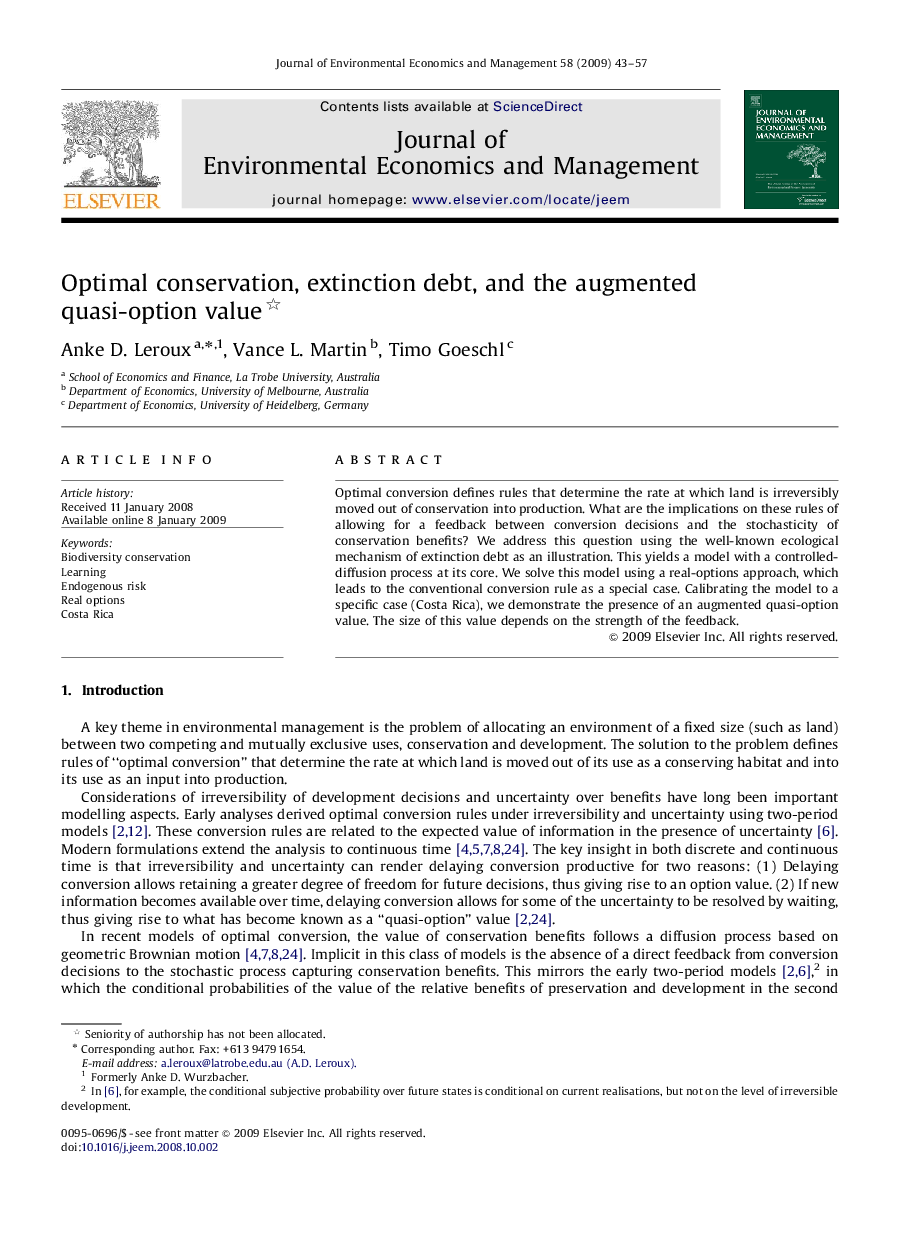| Article ID | Journal | Published Year | Pages | File Type |
|---|---|---|---|---|
| 959318 | Journal of Environmental Economics and Management | 2009 | 15 Pages |
Optimal conversion defines rules that determine the rate at which land is irreversibly moved out of conservation into production. What are the implications on these rules of allowing for a feedback between conversion decisions and the stochasticity of conservation benefits? We address this question using the well-known ecological mechanism of extinction debt as an illustration. This yields a model with a controlled-diffusion process at its core. We solve this model using a real-options approach, which leads to the conventional conversion rule as a special case. Calibrating the model to a specific case (Costa Rica), we demonstrate the presence of an augmented quasi-option value. The size of this value depends on the strength of the feedback.
